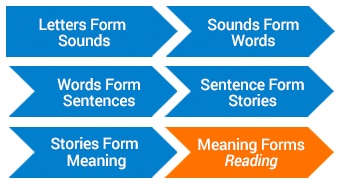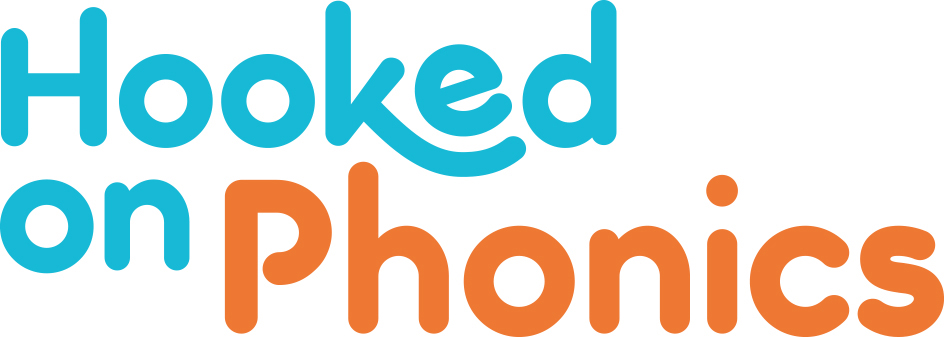What is Phonics

Phonics is all about using sounds to read words.
Let’s say that you learn that the letter c makes “kuh” sound.
Next you learn that the letter a makes “ah” sound.
And the letter t makes “tih” sound.
cat
When you read those sounds together… “k-ah-t” you have the word for “cat“.
You just learned to read the word “cat” using phonics. It’s that simple!
It’s Proven
Research backs up phonics again and again as a critical factor in learning to read.
And not just for some kids.
Evidence shows significant benefits of phonics for children of all ages, abilities and socioeconomic backgrounds.


Phonics Work in Videos Too
“Visual Phonics” is a new Hooked on Phonics method for teaching Phonics with animated text.
Difficult concepts such as letter and sound blending, substitutions and word endings can be easier to teach and understand when kids can see them in action.
Difficult concepts such as letter and sound blending, substitutions, and word endings are easier for a child to understand when kids can see them in action.
For example, Visual Phonics introduces the three letters in cat with different colors to illustrate their phonemic individuality. As each letter is pronounced, it pulses slightly and changes color, then returns to its original color. The child sees a fading effect from left to right to reinforce the directionality, and a change of color to illustrate blending.
Visual Phonics shows various reading skills, such as isolating sounds and syllables, segmentation, rhyming, and substitution, to help children visualize relationships between letters and sounds, sounds and words, and words and syllables.
Instead of only static text on a page, Visual Phonics borrows from the world of film and animation to make phonic lessons more fun.
Here’s What Research Says About Using Phonics

Recognizing Words Is Crucial
The ability to recognize individual words accounts for 80% of a first-grader’s reading comprehension.
More research shows that kids with low reading ability usually struggle with word recognition than from reading comprehension.
And great readers recognize words quickly and automatically. They’ve practiced decoding words and don’t only rely on context to guess.
That’s why word recognition is such a foundation of accomplished readers. Hooked on Phonics teaches kids to recognize words by practicing decoding sounds and by reading stories mostly (90%) within their comfort range.

Before Recognizing Words, Kids Need to Spot Sound-Symbol Relationships
Studies have demonstrated that the best predictor of early reading ability, even before the child begins to read, is his or her understanding of how words are made up of sounds.
When children are taught these skills of hearing the sounds in words, they show greater abilities in reading, word recognition, and spelling.
Hooked on Phonics Learn to Read introduces simple compound words and two-syllable words to support corresponding decoding skills. That way kids get multiple ways to learn this critical skill.

Phonics and Reading Go Together to Help a Child Love to Read
Perhaps most important, research has shown that combining phonics instruction and reading is the best way to develop a good reader.
Reading that includes a high percentage of familiar patterns gives the child the opportunity to read for meaning.
Hooked on Phonics Learn to Read includes books and stories woven into the program at the appropriate readability level to provide oppor tunities for the child to read for meaning and enjoyment.
Why Use Phonics

The phonics approach to reading is one of the most well researched and highly successful reading strategies available for young kids.
And it’s so crucial to get a jumpstart on kids’ reading success at an early age. Not only does early reading success predict reading success at older ages… but it predicts success across the board, in any subject. And it’s hard to catch up if reading is not mastered early.
Did you know…
Toddler Word Level Predicts Success
Did you know kids prepare for their reading education years before reading their first book?
That’s because 90% of a child’s brain is developed by age three.
That means that by age three, a child’s vocabulary can predict third-grade reading proficiency.
That’s why it’s so important to get started early using a system that works for kids!
Once Behind, Difficult to Catch Up
37% of children today enter Kindergarten without the skills necessary to begin their learning journey and that’s troubling.
By the end of first grade, kids are expected to ask questions, remember story details, and talk about each character’s adventures.
And if a child isn’t reading at grade level by that point, there’s an 88% likelihood that he will still be behind in reading by fourth grade.
And that could change their entire lives, because…
Poor Reading Leads to Dropping Out, Poverty
Children who are not reading at grade level by fourth grade are four times more likely to drop out of school and thirteen times more likely to drop out if they also live in poverty.
Did you know that one out of seven adults have such low literacy skills that they can’t read anything more complicated than a child’s picture book?
Illiteracy doesn’t just lead to low self-esteem. It also leads to poverty and crime.
So what is the solution?

Kids Need a Reading Strategy… and Lots of Practice
There is abundant research showing that great reading programs for young kids have two parts:
These two parts of a good reading program combine to make for a great reading education.
And learning to read successfully has benefits for the child way beyond picking up a good book on a rainy afternoon. It can transform a child’s entire life.

Reading Is the Gateway Skill to Learning
Reading books helps children develop social-emotional and self-regulation skills.
Not only that, but the better a child can read, the better he can learn other subjects, such as math, science, and history.
At Hooked on Phonics, we believe literacy empowers people to better their lives and the lives of their families and our communities.
Our Approach to Phonics
Hooked on Phonics Learn to Read is the perfect solution for parents looking to help their children…
Kids can use this program on their own, with just a little help—and a whole lot of encouragement—from their parents.
This program uses over 200+ music videos, stories, exercises, and interactive games as a total, comprehensive reading program to keep kids interested and motivated on each lesson.
Here Is the Exact 20-Minute, 3-Step System to Learn to Read
This program was developed by leading educators, based on research of how children learn to read. It begins with small steps… little moments of victory at small activities.
And then… it happens. Your child reads.
The whole system is incredibly easy to use because the program tells you exactly which tool to use and when.
When you get started, you’ll find each lesson was designed to last 20 minutes or less.
The easy-to-follow, 3-step approach works like this:
Step 1: LEARN
Start by opening up Hooked on Phonics.
It will guide you to a sound activity to practice the first building block of reading: understanding the sounds that different letters make, or “phonemic awareness.”
This step introduces kids to new information and concepts… or simply reinforces a concept they may have already learned.
The goal of this section is to familiarize your child with the sounds that come from certain letters.
Here’s an example of one such video that might start the beginning of a lesson:
Step 2: PRACTICE
The lesson will then switch from the introduction activity to one of the included videos, or other activity including singing, matching, tracing, and more.
Your child gets to immediately practice the new sound combinations and words in exercises and games.
She’ll practice building new words with familiar sounds and new letters, selecting written words after hearing them, and guessing words before they’re read aloud.

Step 3: READ
Your child puts it all together to read a great story written specifically to support what your child has just learned.
Each book is written using words your child has learned to read so far in the program, with a few unfamiliar words to add spice to the stories.
These are original books that you can only get through this Hooked on Phonics program. Books such as:

Step 4: CELEBRATE
As your kids progress through this amazing 3-step system, they’ll build a library of great stories that they can feel proud to have mastered.
And you can celebrate after each lesson and track your child’s progress by earning stars for each achievement.
As a parent you might let your child “pay” their star rewards for special prizes, such as a treat around the house or even more time with their Hooked on Phonics videos and games.



